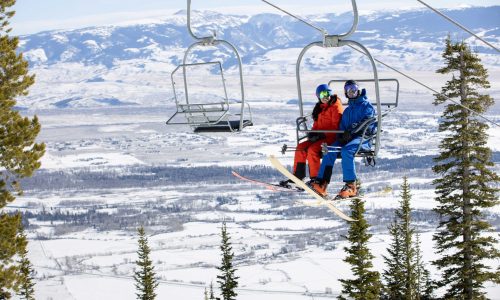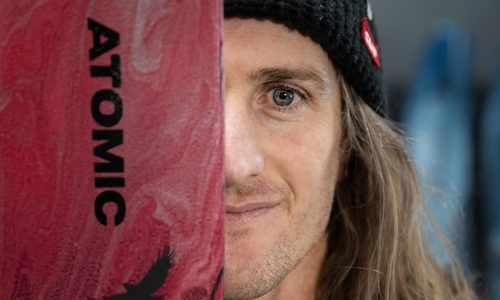Home » Gear Reviews » Ski & Snow » Ski Jackets » Millet Magic Stretch
Millet Magic Stretch Review
October 14, 2015 85
85 The Good
- Cozy fit
- Good stretch
- Lots of bells and whistles
- Good value
The Bad
- A bit heavy
- Odd front drop pockets
The Millet Magic Stretch is a classic frontside insulated ski shell at a good price. It is warm and fits well with lots of features like zip-off hood and a tethered goggle wipe.
Durability
The Magic Stretch has a lot of seams—usually a jacket’s weak point—but it is swathed in a stretchy, burly fabric that will stand up to plenty of abuse. The relatively large-gague zippers will also hold up well.
Weatherproofness
This jacket checks all the boxes in the weathproofing department with a waterproof breathable fabric, synthetic insulation, a long hemline, and powder skirt for keeping snow out of your waistline. The fabric is rated to 15,000mm on the index, where many ski jackets hit 20,000mm, but it’s waterproof enough for all but an all-day downpour.
Breathability
The Magic Stretch is on par with other insulated ski jackets. The pit zips are smaller, but are mesh-backed to keep snow out, in case of wipeout.
Features
This jacket has a ton of features. There is a tethered goggle wipe, powder skirt, seven pockets (including a bicep pocket for electronic ski pass or a radio), snaps that hitch to ski pants to make a functional one-piece, stretchy wrist gaiters, and a hood that zips off (it’s too small to fit over a helmet). In other words, the Magic Stretch is fully loaded.
Function
We liked the stretch factor, and the snug, cozy fit on this jacket. It is warm, though a tad bit heavy, due to full features, stretch fabric, and synthetic insulation.
All the ski jackets and pants reviewed are tested by the same five criteria; materials, features, weatherproofness, temperature control and fit/comfort. All the pieces were tested over multiple days in a variety of conditions to see how they perform throughout an entire ski season. Testers do all they can to try out every piece on the same day to compare each one in similar conditions and they get out on lots of days to test the jackets in a range from sunny spring days to stormy wintery days to see how they hold up.
For materials, the specifications provided by the brands is often very important. These specifications tell us what type (if any) and amount of waterproofing or insulation a jacket may have. With a wide variety of third-party insulating and waterproofing materials available, as well as the recent rise of “in house” proprietary materials being used, it is important to know exactly what fabrics and insulations are being added to each piece in an effort to distinguish what makes one piece better than the next. Since testers typically only have only one season to test these pieces, durability is determined in part by any obvious fraying, ripping or other signs of reduced durability.
Since heavily insulated jackets are primarily intended for lift accessed skiing and riding there is an expectation that features will be tailored to provide the ultimate in comfort and convenience when on the mountain. This means that features such as a powder skirt, pockets for gear, a dedicated pass pocket, a helmet compatible hood, and wrist gaiters are all expected and then extra features such as a RECCO reflector or insulated phone pocket are considered a bonus.
The weatherproofness of a jacket first depends on what the intended purpose of the jacket is and then is based on the specifications that the brands supply. Since most heavily insulated jackets will be used at the resort under cold conditions there is an expectation that the jacket be able to shed blowing snow for the stormiest of days yet also fairly breathable. Since these jackets are for very cold weather, waterproofness isn’t as necessary.
The temperature control of a jacket is also based on the specifications that the manufacturer provides. The line between a lightly and heavily insulated jacket isn’t clear cut but generally one would expect to use a heavily insulated jacket primarily when the temperatures drop well below freezing and need to still be comfortable when the day proceeds to get even colder. The jackets are then rated to how well they do in very cold temperatures and more importantly how well the jacket does when the temperatures fluctuate which is a common occurrence for any regular snow sports enthusiast. Breathability plays a big factor here because the breathability of a jacket will affect how warm or cold one feels as heat generated while skiing and then go sit on a long chair lift afterwards. The ability to fully unzip pit zips is a crucial part of temperature control since that is often the largest factor in preventing overheating.
Lastly, the fit and comfort category is fairly subjective but having multiple testers use the product provides for a good range of body shapes and opinions. Factors that are important here are how long or short a jacket is and if it is true to size. For determining comfort, the amount of stretch the jacket has and how soft it is on the inside often plays into the rating.

















